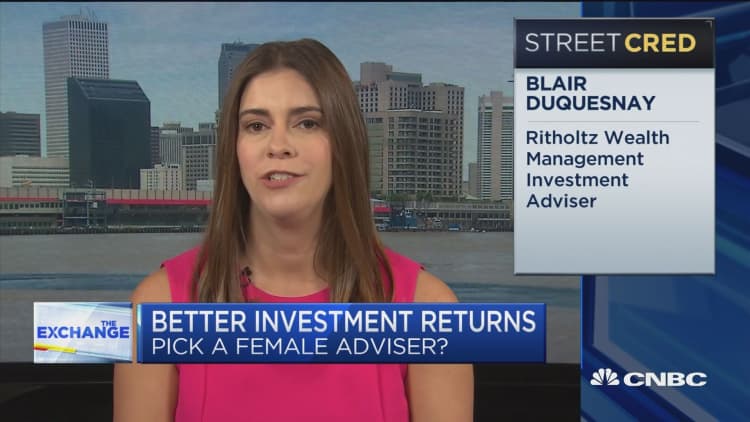
It's no secret that women are lagging behind their male counterparts in the financial industry.
So it should come as no surprise that Citi — one of the world's largest banks — said Wednesday that its female employees earn 29 percent less than its male employees globally.
But it's not just about a pay gap — there are also fewer females working in the business.
"Wall Street's been a boy's club forever," Ritholtz Wealth Management's Blair duQuesnay told CNBC on Wednesday.
"Whatever we've been doing to try and encourage more women hasn't worked. So I think we need to shake it up and try something different," said the investment advisor, who recently penned a New York Times op-ed titled "Consider Firing Your Male Broker."
The disparity can be seen across the board — from the corner office to the cubicle. Women account for less than 17 percent of senior leaders in U.S. investment banking, according to a Catalyst study released last year. And Morningstar found that less than 10 percent of all U.S. fund managers are women.
The numbers may only tell part of the story. In 2018, women accounted for 19 percent of the CFA Institute's members. The global association for investment professionals offers the Chartered Financial Analyst (CFA) designation.
Rebecca Fender, head of the group's future of finance initiative, said its female membership has been growing.
"Things are beginning to work in terms of making the point that this is a good industry for women," she said. "There's just greater recognition that women need to be specifically encouraged to look at this as a field they can do well in."
She also said it's important to be proactive about keeping women in the industry, and moving up the ladder.
For duQuesnay's part, she isn't interested in getting her male counterparts fired. She said she just wants to raise awareness about the lack of women — and encourage them to get into the field.
"Our clients are women too. Women are half of the population and they are only one-fifth of advisors, a number that hasn't changed in the 15 years that I've been doing this," she said on "The Exchange."
When it comes to pay, Citi is only the latest example of the inequity. A November report by the Association of University Women, a Washington-based nonprofit dedicated to advancing equity for women, found that female financial managers made 65 percent of what their male counterparts earned.
On Wednesday, Citi's head of human resources, Sara Wechter, addressed the issue in a blog post.
"This reiterates the importance of our goals to increase representation of women and U.S. minorities in senior and higher-paying roles at Citi," she wrote. "We know we need a comprehensive approach to our diversity initiatives to make the progress we want to see."


